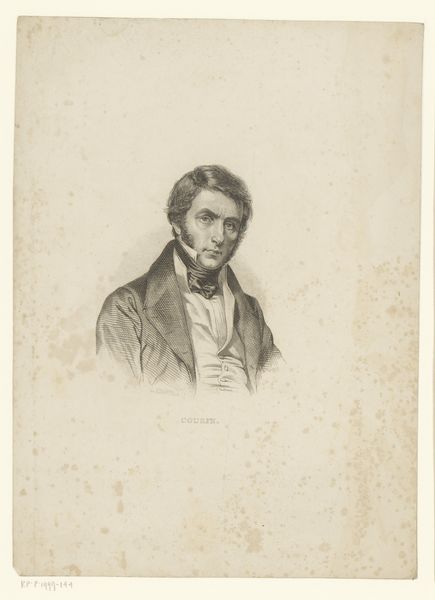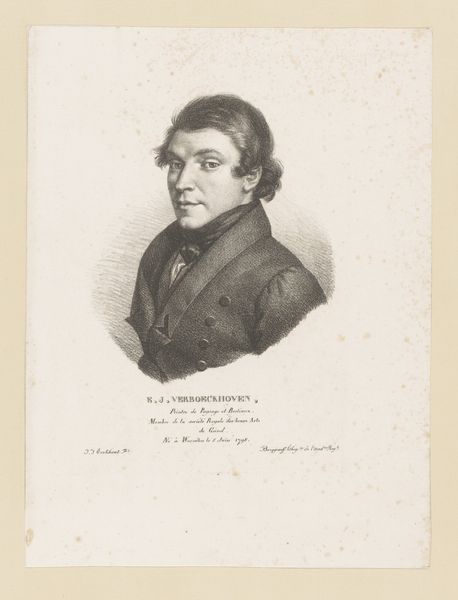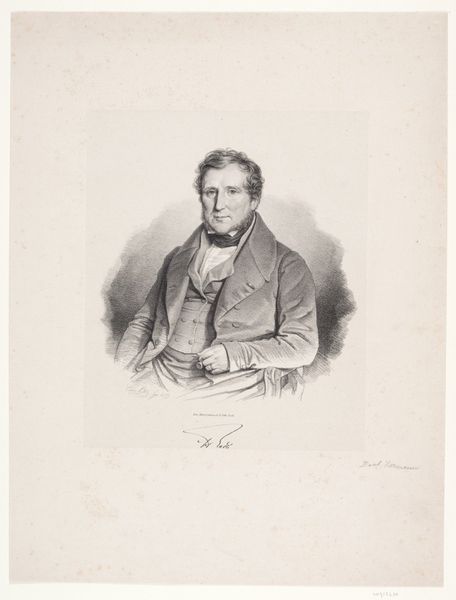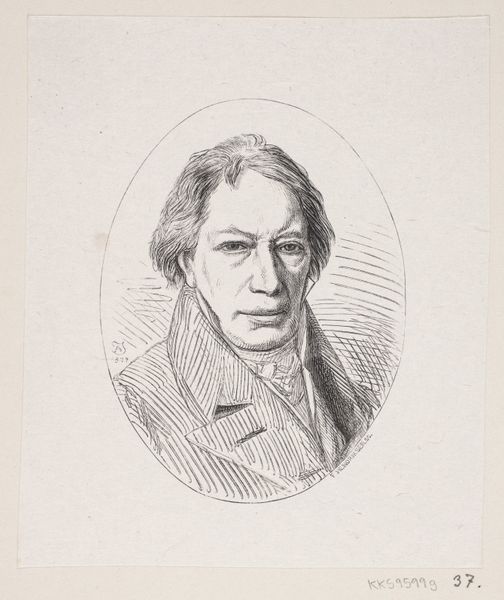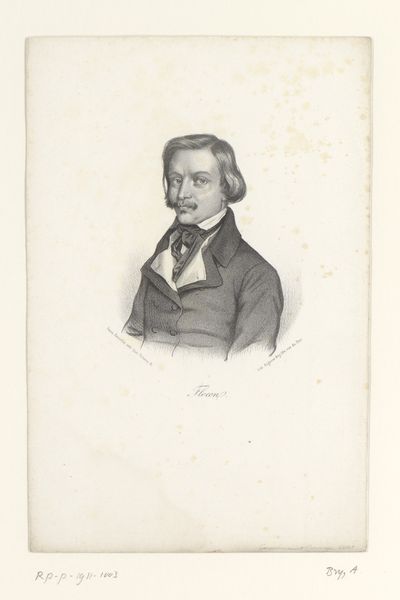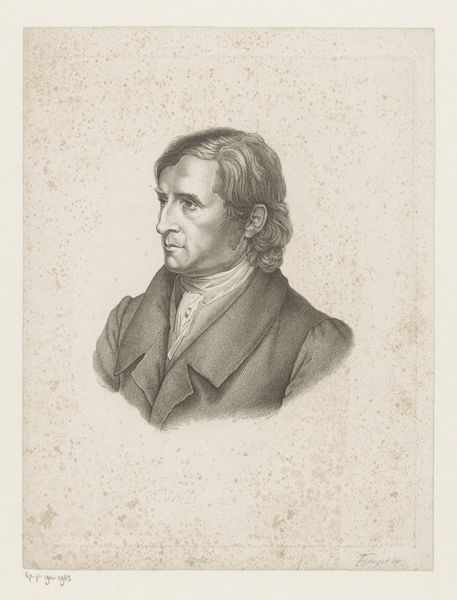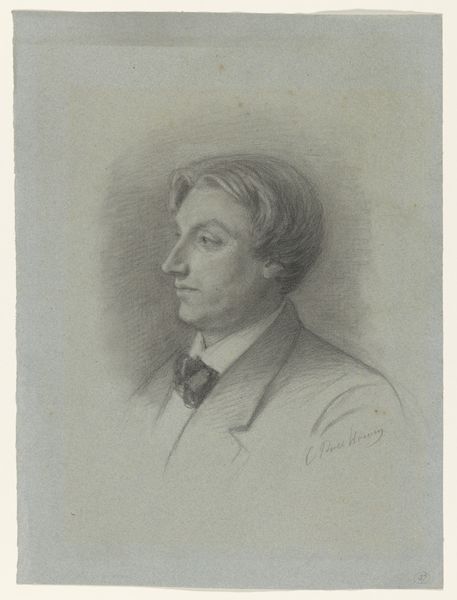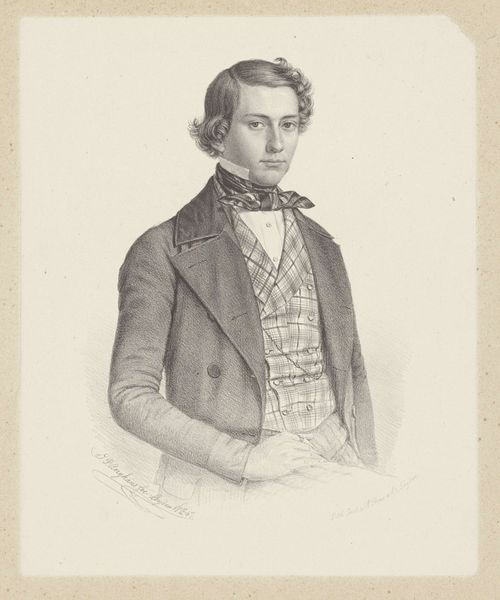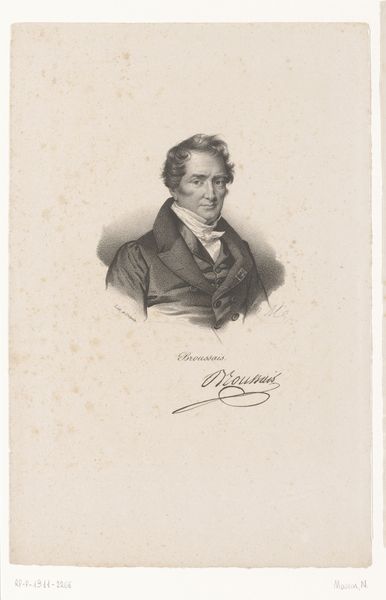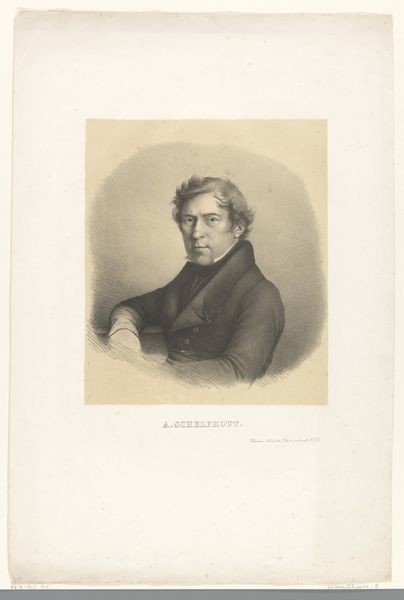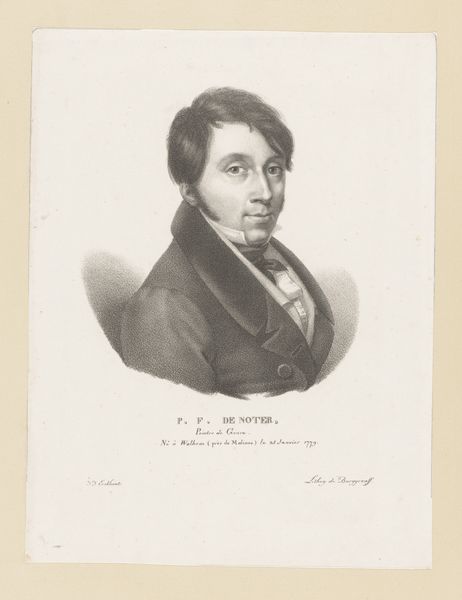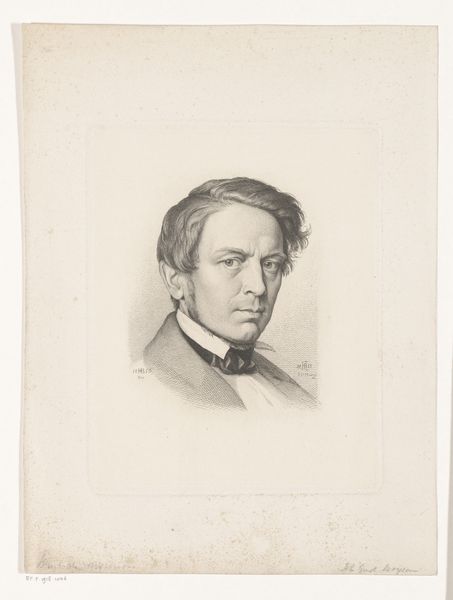
drawing, pencil
#
drawing
#
pencil sketch
#
caricature
#
pencil drawing
#
romanticism
#
pencil
#
portrait drawing
#
academic-art
#
fine art portrait
Dimensions: height 483 mm, width 315 mm
Copyright: Rijks Museum: Open Domain
Editor: This is Nicolas Maurin's "Portret van Victor Cousin" from 1838, created with pencil. It has a formal, almost romantic sensibility. I find it quite compelling; his gaze is rather intense. How do you interpret this work within its historical context? Curator: Well, considering the time, it's vital to remember the social function of portraiture. In the 19th century, a portrait, particularly of an intellectual like Victor Cousin, served as a marker of status and intellectual clout. Consider how Maurin uses the pencil medium. Do you find the technique democratizing, considering it is a drawing and not an oil painting? Editor: I hadn't considered that. It's true, a pencil drawing might be seen as more accessible, or perhaps less overtly opulent than a painted portrait. It's a portrait of a philosopher. Did that influence its visual language? Curator: Undoubtedly. Think about the context of the burgeoning philosophical movements of the time, Cousin’s own influence on French philosophy, and then think about how portraiture serves as a kind of visual branding. This wasn't merely about likeness. How do you think Maurin tried to visualize Cousin’s intellect through the artwork? Editor: I guess I see it in the intensity of his eyes and in his composed demeanor; it projects intelligence. So it's about conveying intellectual authority, perhaps legitimizing Cousin’s position in society. Curator: Exactly! And considering Maurin's career trajectory, making lithographs for a wide audience, how does that add to understanding the portrait's intent beyond the artistic? Editor: It frames it less as pure art, and more as a visual representation for widespread recognition, almost promotional, but for intellectual influence. Curator: Precisely. And perhaps that is the most enduring function of such portraits within society and history. They shape legacies. What did you learn from considering its social function? Editor: Seeing this as a promotional tool rather than *just* art gives me a totally different view! It highlights the dynamic relationship between art, influence, and historical context, and now it challenges my perspective. Thanks!
Comments
No comments
Be the first to comment and join the conversation on the ultimate creative platform.
